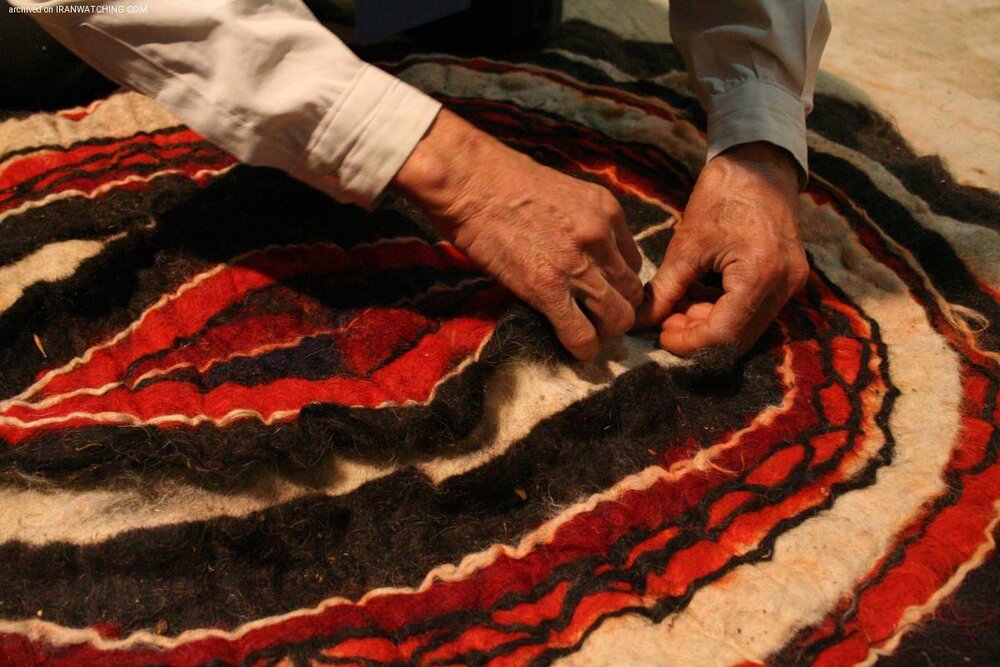
Category: General
Country: Iran
TEHRAN –Handicraft skills of namad-mali, jajim-bafi and moj-bafi, which are considered as ancient Iranian textiles native to Kordestan province, are on the verge of oblivion, deputy provincial tourism chief has warned
December 28, 2020 - 18:34
Namad-mali is a traditional craft to make wool felt rugs and other objects by rolling and pressing them. Jajim-bafi and moj-bafi are both the art of making hand-woven floor coverings.
Unfortunately, in recent years, some handicrafts fields have been forgotten across the province as their usage was defined for a specific period and nowadays crafters don’t practice these fields anymore, Farhad Hamedi said on Sunday.
However, to revive, preserve and protect such handicrafts fields, the province’s cultural heritage department plans to train crafters and equip workshops in the villages and rural areas, the official explained.
Meanwhile, new uses according to customer needs have been defined for the handmade products while modern technologies are also planned to be taken into account, he added.
Back in June, provincial tourism chief Esmaeil Marivani announced that handicrafts exports from the western province reached some $592,000 during the previous Iranian calendar year 1398 (ended March 20).
Some nine high-quality works by artisans in the province were also awarded the National Seal of Excellence during the last year, he added.
He also noted that some 258,000 people are currently working in various fields of handicrafts in the province, of which 70 percent are women.
The name Kordestan refers to the region’s principal inhabitants. After the Turkish invasion of Iran in the 11th century CE (Seljuq period), the name Kurdistan was applied to the region comprising the northwestern Zagros Mountains. It was during the reign of Abbas I the Great of Iran’s Safavid dynasty (1501–1736) that the Kurds rose to prominence, having been enlisted by Abbas I to help stem the attacks of the marauding Uzbeks from the east in the early 17th century.
Iran exported $523 million worth of handicrafts during the past calendar year 1398 (ended March 19). Of the figure, some $273 million worth of handicrafts were exported officially through customs, and about $250 million was earned via suitcase trade (allowed for customs-free and tax-free transfer) through various provinces, according to data provided by the Ministry of Cultural Heritage, Tourism and Handicrafts.
Ceramics, pottery vessels, handwoven cloths as well as personal ornamentations with precious and semi-precious gemstones are traditionally exported to Iraq, Afghanistan, Germany, the U.S., the UK, and other countries.
ABU/AFM
Source:
https://www.tehrantimes.com/news/456289/Ancient-textiles-on-the-verge-of-oblivion-in-western-Iran
Copyrights © 2025 GLOBAL TEXTILE SOURCE. All rights reserved.